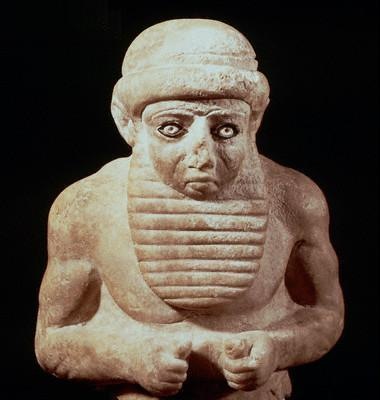Anyone who reads The Hump regularly is well aware of the answer I found to the apparent scientific impossibility of an historical Adam and Eve. After all, that is the subject of the book of mine that came out last month, The Generations of Heaven and Earth.
As I said at the beginning of this series, problems like this caused me no crisis of faith, because I was thoroughly convinced that the “cognitive dissonance” between science and orthodox Christian doctrine would sooner or later be resolved.
Still, the New Testament places considerable reliance – more than at first appears – on Adam and Eve as historical figures. Jesus’s teaching on marriage, for example, quotes the verses in Genesis 2 on the ontological union between Adam and the woman derived from his side. It is hard to see how such a passage could have authoritative force over a practice as potentially fraught and serious as marriage, unless it represented a real foundational event. The disciples, you will remember, thought that such teaching might very well make it better not to marry at all, and Jesus’s own application was to bring severe restriction on divorce. If it’s based on the creation of the race by God, it makes sense – if it recycles a creation myth, it’s hard teaching indeed.
There are other bits of NT teaching dependent on the garden account, but of course the key passages are Romans 5, and 1 Corinthians 15. The former, in particular, makes a clear comparison between the Jesus Christ who, by our union with himself, gets us out of sin, and the Adam who, by our inclusion in him, got us into it.
I had long come to the exegetical conclusion that Rom 5:12 cannot only mean that all men are like Adam in their sin (though it includes that). That was reinforced by the prevalence, at BioLogos back in those days, that sin was the result of “evolutionary selfishness” – not only an idea showing ignorance of an evolution process that has nothing to do with selfishness, but one that makes the Creator the author of our sinfulness. It’s one thing for a key component of a system to fail voluntarily, but if every component is faulty, something’s wrong with the engineer.
No, we are implicated in Adam’s sin in the sense of that one act of disobedience. Critics – not least modernists in the Orthodox church – blame Augustine for using a faulty Latin translation to reach the conclusion of original guilt, but it’s right there in the Greek – the aorist tense of “all sinned” in v12 implies a single, completed act and not an ongoing tendency. The meaning is that all sinned “in Adam,” on which 1 Cor 15:22 is a commentary.
Paul’s idea goes beyond, but includes, the Reformed idea of “federal headship,” to some concept of a descendant’s participation in their ancestor, and the participation of the whole race in their first father.
I am surprised how quickly in my search the answer to this came, through David Opderbeck’s 2010 BioLogos article on what Josh Swamidass later came to call “the genealogical Adam and Eve.” I ran with it in several blog articles and BioLogos comment threads, but I confess later backed off a little. This was not because of any weakness in the theory, but from sheer funk, because so few other people seemed interested to take it up.
That changed in 2017 with Joshua Swamidass, whose enthusiasm fed mine (and possibly vice versa) and whose gift for networking began to provoke an interest from all kinds of people of many scientific and theological persuasions.
The rest is history – and rather than my prattling on about that history here, why don’t you buy Joshua’s book, and/or mine? Essential reading for anyone interested in the origins question.

